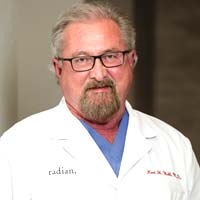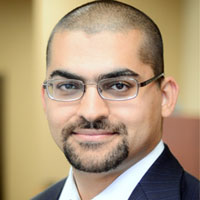Neograft and ARTAS Scar-Free Hair Transplants: A comparison of Benefits
Hair restoration market is growing. Rising competition in job market, pressure in social relationships and the aging baby boomer population affected by hair loss have contributed for this growth. The competition and demand from customers for quality treatment have brought several competitive technologies to the market.
Some of the most advanced technologies for hair restoration are NeoGraft and ARTAS. Both technologies are approved by the FDA. The two procedures are now being widely used as alternatives to traditional strip method or Follicular Unit Transplant (FUT). FUT or strip surgery is not the ideal method for male patients as it leaves long permanent scar on the back of their scalp.
What is NeoGraft?
NeoGraft is a device that facilitates the harvesting of hair follicles during a Follicular Unit Extraction (FUE) hair transplant. The process
uses automated machines for the harvesting hair follicles, dramatically improving the accuracy and speed over previously used manual extraction instruments.
Earlier methods of FUE were performed by hand. It has been too time-consuming and expensive for widespread use. The NeoGraft system offers technological advances that can reduce the time and cost of transplants, making FUE more practical for both men and women of all ages.
In NeoGraft, hair follicles are
gently lifted out of the scalp with a small instrument and light suction, and then placed into the bald or thinning areas with reverse air pressure. With NeoGraft, hair is harvested without leaving the large linear scar associated with the strip method.
The technology has proved instrumental in the delivery of hair transplant services because it assists the surgeon to transplant the hair with absolute precision. The equipment operates under pneumatic pressure ensuring automated control. The surgery leaves a completely natural appearance and with less pain and downtime. There is minimal discomfort. Patients leave the clinic immediately after the procedure, and they may join work the next day.
What is ARTAS?
ARTAS System is a minimally invasive solution for permanent, natural looking hair. The process involves transplanting healthy follicles to the patient's scalp most affected by baldness with the help of robots. The procedure is
minimally invasive and utilizes sophisticated digital mapping and precision robotics to deliver beautiful, natural looking results.
An FDA-approved technology, ARTAS was developed with several leading hair restoration physicians. The advantage of this computer-assisted and image-guided hair restoration technique is that it offers a minimally invasive solution for permanent, natural-looking results.
Hair transplant using ARTAS system involves transplanting healthy follicles to the patient's scalp using a robot. ARTAS hair restoration procedure is the right hair restoration solution because the implanted hairs develop their blood supply, so they grow naturally like other hairs. Results are visible in a few months' time.
Advanced hair restoration technologies like NeoGraft and ARTAS are the best solution for males suffering from androgenic alopecia. These treatments are prescribed for patients above 35. This is the time when the pattern of the baldness becomes clear. The treatment can also be used to thicken mustache, beard, or eyebrows.
HairFear
Frequently asked questions about hair transplant procedures
How much does a hair transplant cost?
Hair transplants can vary in price based off of the area in the world that you are interested in getting a hair transplant as well as the size of the area where you may need a hair transplant. Experienced doctors in the United States will often charge some of the highest prices for a hair transplant worldwide and this is why so many travelers make the move to other parts the world like Turkey, India, Thailand, Mexico...etc for their hair transplants.
Will a hair transplant hurt?
Although hair transplants may look like a particularly
unpleasant or painful experience is actually very little discomfort involved
with the surgery itself. Hair transplants are always done under an anesthetic so there's absolutely zero pain during the treatment itself. Many people actually relate the process as being very similar to going to the dentist for filling or root canal. Mild pain can persist over the course of postop treatment but he generally just resumes for a few days.
Who can deliver the best surgery?
It's usually best to consider working with surgeons who have and IAHRS certification or international alliance of hair restoration surgeons recognition. IAHRS can often deliver recommendations for the best surgeons in each particular area.
Is this scarring noticeable?
Any type of hair transplant will require the use of incisions throughout the scalp. There can also sometimes be a small scar from the donor area towards the back of the scalp. Asking to look at photos of the surgeon's previous work will help you to see roughly how bad the scarring could be. In most cases an experienced professional can limit the look of scarring and noticeable marks from the surgery.
How long does it take for the hair to grow?
In most cases hair growth will start within eight months and you can start to see a full effect from the hair transplant after a full year. The initial signs of growth can usually start between 3 to 4 months after the surgery.
Are the results permanent?
The hair follicles that are transplanted are generally the ones which are genetically resistant against the symptoms of baldness. As long as you receive hair loss treatment later in your life after the symptoms of balding have started to subside, you can have a better chance at permanent results.
While everyone know you've had surgery?
If you want to limit the chance that people may find out about your surgery it's important to give at least three weeks of healing as the surgical area will be affected and red just after surgery. After around a month of healing it can look far less noticeable. You could consider wearing a hat while time passes or opting for some extra time off if possible.
How long should I rest after surgery?
It's recommended to rest for at least a few days after surgery so that your body can recover. Trenton to over exert yourself and limit sexual activity, running in the gym for around 10 days after surgery.
Is it possible to lose more hair as a result of surgery?
There is always a chance of shock loss which happens when the hair is weak and miniaturizing after the surgery. As long as the surgeon is choosing the correct hair follicles and performing the surgery well it's possible to minimize the chance of this happening however.
Will I need another hair transplant?
The need for another transplant really depends on the individual. With a solid foundation surgery and working to potentially bolster results with drug therapy, you can improve the stability of the hair that was transplanted as well as prevent further loss. Getting a hair transplant early
on in your 20s or early on in life could lead to needing long-term transplants as hair loss can be progressive.







